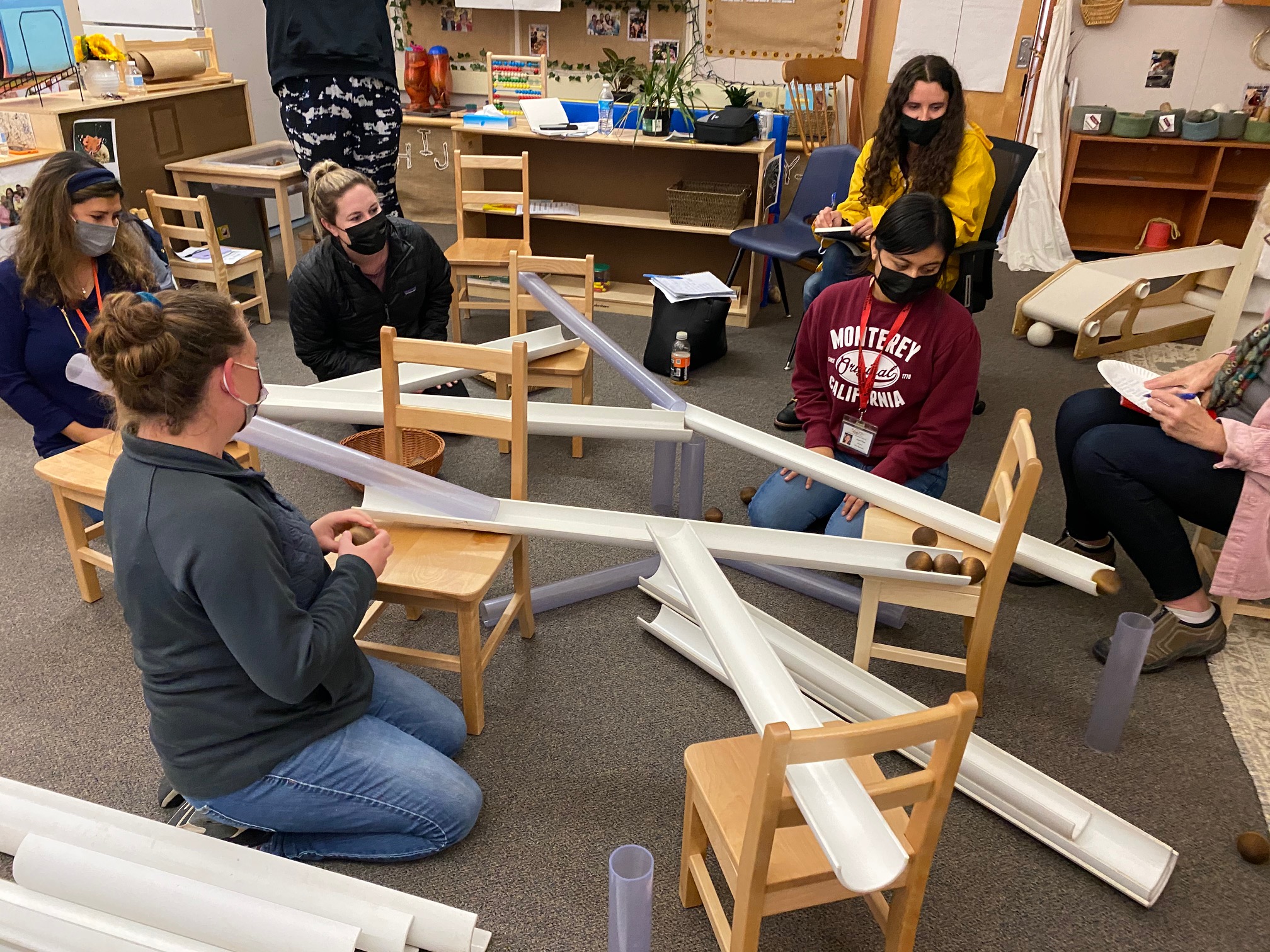Universal Transitional Kindergarten: Building a New Foundation for the Youngest Learners
Date: 03/07/2022
Author: Eric Wittmershaus, Sonoma County Office of Education

Educators take part in a STEAM training at the Healdsburg North Bay Children's Center Preschool at Fitch Mountain Elementary School in Healdsburg. (Photo by Ryan Kurada)
Ryan Kurada remembers his reaction the first time someone suggested he teach kindergartners.
“Is that the grade where they eat paste out of cans and take naps?” recalled Kurada.
But now, after several years of using project-based learning to educate the youngest schoolchildren, Kurada is part of a team at the Sonoma County Office of Education that is helping teachers prepare for universal transitional kindergarten.
The once skeptical rookie teacher has become an eager evangelist for the benefits of starting public school at age 4 and potentially as early as 3.
Major shift ahead
SCOE’s work comes as California stands on the brink of a generational shift in how our youngest students learn. The state will be phasing in an effort to make every 4-year-old eligible for transitional kindergarten by 2025-26.
SCOE staff who are laying the groundwork for this change say it presents an opportunity to rethink how we educate young children, folding in best practices from a multifaceted early childhood education system and laying the foundation for a lifetime of learning.
Brulene Zanutto, SCOE’s coordinator of early literacy and school readiness, is leading the TK effort, part of a shift to what is known as a P-3 model of education emphasizing instruction from preschool through third grade. Zanutto said the state’s plan to foster public education beginning at age 4 and eventually age 3 will incorporate successful practices from a complex system that includes approaches ranging from Head Start programs to state-run preschools and daycare settings in private homes.
“The (current) early childhood education system does amazing work, but there are a lot of successful approaches to consider when crafting a TK program,” Zanutto said.
Advocates for children have applauded expanding public education to younger children, which would take early childhood programs that many working families can’t afford and make them part of public schooling, free to all children.
“Having a child in a safe learning environment for free is very attractive to some families,” Zanutto said. Private programs can cost $11,000 a year and even families who can afford that have found that Sonoma County does not have enough available slots for the region’s youngsters.
Refreshing current approaches
As the public education system expands, it presents an opportunity to revisit and refresh current approaches. For example, Zanutto said metric-driven assessments of education, such as standardized testing or graduation rates, can foster too narrow a focus on specific points of students’ educational journeys. A more holistic approach would begin at an early age, as young as 3, and prioritize growth every year of a student’s time in schools.
Zanutto and Kurada each said they hope the value of this approach will become clear over time.
“My hope is that over the next five years, SCOE can really get into that conversation … and help our county to realize that, oh my goodness, if we really focus on these young learners and give them the best start possible, those third grade reading scores and eighth grade math scores are going to get better,” she said.
In order for this expansion of public school to be a success, districts need to do more than just bring 3- and 4-year-olds into current public school settings and expect them to thrive.
Teacher training crucial
Perhaps the biggest adjustment school communities face is in the area of teacher credentialing and training at a time when many districts are contending with teacher shortages at all grade levels. That’s because right now, Zanutto said, early childhood educators and K-12 teachers often follow different career development tracks.
“Teaching a 4-year-old is very different from teaching a 10-year-old,” Zanutto said. “The way our systems are set up … pretty early on, you have to decide, ‘Do I want to teach preschool or elementary school?’”
Currently, you can become an elementary school teacher without having to take a child development course, but such classes are typically foundational for preschool teachers, Zanutto said.
In order to qualify teachers who have received a traditional K-12 training for early childhood education, California’s Legislature has created multiple pathways, including a 24-unit certificate program, a specialized teaching permit for preschool or allowing districts to demonstrate that individual instructors have real-world experience equivalent to the 24 units.
To help ensure enough teachers are able to qualify for early childhood education jobs at a time when there’s a teacher shortage, SCOE is partnering with the North Coast School of Education to develop a low-cost program with the aim of creating a pathway for current credentialed teachers to earn 24 units of early childhood education. The NCSOE of education Beginning Teacher program allows preschool teachers who hold a bachelor’s degree to earn a teaching credential while teaching in a TK classroom, qualifying more teachers faster via a program they can afford.

